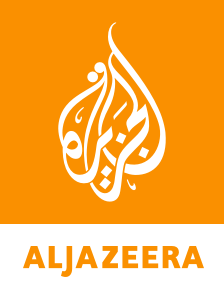The demonstrations, which started over deteriorating living conditions, have left 22 people dead, according to the UN.
Published On 29 Sep 2025
Madagascar’s president, Andry Rajoelina, has dissolved his government in response to mass demonstrations over power and water shortages that turned deadly, with the United Nations reporting that at least 22 people have been killed and more than 100 others were injured.
The protests, which began last week and continued into Monday, were led largely by young people, angry over deteriorating living conditions in the capital, Antananarivo.
Recommended Stories
list of 4 items- list 1 of 4Netanyahu says he supports Trump’s plan to end war on Gaza
- list 2 of 4Here’s the full text of Trump’s 20-point plan to end Israel’s war on Gaza
- list 3 of 4North Korea says denuclearisation would mean surrendering its sovereignty
- list 4 of 4Lawyer for suspect in Kirk killing wants more time to review evidence
Experts say they represent the most serious challenge to Rajoelina’s authority since his re-election in 2023, and the largest wave of unrest the island nation has seen in years.
Crowds gathered at Antananarivo’s main university on Monday, carrying placards and singing the national anthem, before attempting to march into the city centre, according to footage broadcast by the local channel 2424.MG.
Police fired tear gas to disperse the demonstrators, as authorities enforced a dusk-to-dawn curfew that has been in place since last week. Security forces have also used rubber bullets to try to quell the unrest.
Looting has been reported at supermarkets, appliance shops and banks across the capital of 1.4 million people. Homes belonging to politicians have also been attacked in recent days.
 Protesters run as Malagasy riot police use tear gas during a demonstration against frequent power outages and water shortages, near the University of Antananarivo on September 29, 2025 [Zo Andrianjafy/Reuters]
Protesters run as Malagasy riot police use tear gas during a demonstration against frequent power outages and water shortages, near the University of Antananarivo on September 29, 2025 [Zo Andrianjafy/Reuters]The president promises dialogue
In a televised address on Monday, Rajoelina acknowledged the public anger and apologised for his government’s failings. “We acknowledge and apologise if members of the government have not carried out the tasks assigned to them,” he said on state broadcaster Televiziona Malagasy (TVM).
The president promised measures to support businesses that suffered losses during the unrest and said he wanted to open a channel of communication with young people. “I understand the anger, the sadness, and the difficulties caused by power cuts and water supply problems. I heard the call, I felt the suffering, I understood the impact on daily life,” he added.
The demonstrations have been driven by frustration at years of economic hardship. Madagascar, an island nation off Africa’s southeast coast, is one of the region’s poorest countries.
About 75 percent of its 30 million people lived below the poverty line in 2022, according to the World Bank.
Many protesters blame Rajoelina’s government for failing to improve conditions, particularly as frequent power outages and water shortages have disrupted daily life.
Casualties and disputes over figures
The UN High Commissioner for Human Rights said that casualties included protesters and bystanders killed by security forces, as well as people who died in looting and violence carried out by gangs unconnected to the demonstrations.
Madagascar’s Ministry of Foreign Affairs rejected those figures, insisting they were not based on official data but on “rumours or misinformation”.
Organisers say they have taken inspiration from youth-led movements in Kenya, Nepal and Morocco. Demonstrators in Antananarivo waved a flag first used in Nepal earlier this month, when protests forced the country’s prime minister to resign.
The movement in Madagascar has been largely coordinated on social media, particularly Facebook, echoing similar online mobilisation seen in Kenya last year, when sustained demonstrations pushed the government to abandon proposed tax legislation.

 1 month ago
79
1 month ago
79

















































